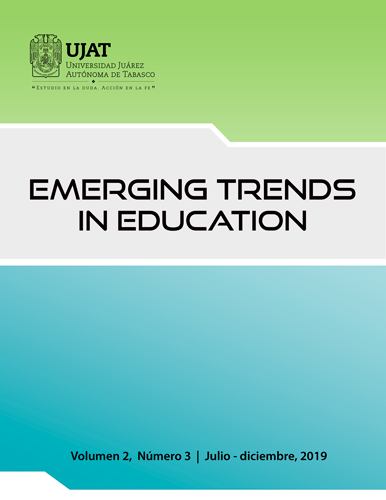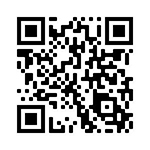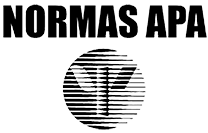Technology in Second Language Education: Overcoming the Digital Divide
DOI:
https://doi.org/10.19136/etie.a2n3.3250Abstract
The use of information and communication technologies (ICT) can help teachers implement valuable instructional tasks where learners use the second language (L2) during input and output tasks, integrating various types of technologies, applications, and websites. Often, educational actors would argue; however, that limited access to ICT prevents teachers from implementing ICT-enhanced L2 instruction in the classroom. In this paper, we revisit that perspective through an exploration of three conditions related to the use of technologies for second language teaching: the digital divide, teacher education, and proper ICT-enhanced task implementation. Building upon a review of theoretical and empirical research on these conditions, we argue that limited access to ICT is not a determinant factor, as teacher education and careful L2 task planning can help teachers maximize the use of the limited resources available in their school contexts.
References
Albirini, A. (2005). An exploration of the factors associated with the attitudes of high school EFL teachers in Syria toward information and communication technology (Doctoral dissertation). Retrieved from https://bit.ly/2jvXEK7
Al-Zaidiyeen, N. J., Mei, L. L., & Fook, F. S. (2010). Teachers’ Attitudes and Levels of Technology Use in Classrooms: The Case of Jordan Schools. International Education Studies, 3 (2), 211-218.
Breyer, Y. (2009). Learning and teaching with corpora: Ref lections by student teachers. Computer Assisted Language Learning, 22, 153–172.
Brudermann, C. (2010). From action research to the implementation of ICT pedagogical tools: Taking into account students’ needs to propose adjusted online tutorial practice. ReCALL, 22, 172 -19 0.
Castañeda, D., & Cho, M. (2016) Use of a game-like application on a mobile device to improve accuracy in conjugating Spanish verbs. Computer Assisted Language Learning, 29 (7), 1195-1204.
Chambers, A. & Bax, S. (2006). Making CALL work: Towards normalization. System, 34, 465-479.
Chapelle, C. (2001). Computer applications in second language acquisition. Foundations for teaching, testing and research. Cambridge, UK: Cambridge University Press.
Chapman, R. & Slaymaker, T. (2002). ICTs and Rural Development: Review of the Literature, Current Interventions and Opportunities for Action. London, UK: Overseas Development Institute.
Dooey, P. (2008). Language testing and technology: Problems of transition to a new era. ReCALL, 20, 21-34
Egbert, J. & Yang, Y.-F. (2004). Mediating the digital divide in CALL classrooms: Promoting effective language tasks in limited technology contexts. ReCALL 16, 280 –291.
Fuchs, C., (2016) “Are you able to access this website at all?” – team negotiations and macro-level challenges in telecollaboration, Computer Assisted Language Learning, 29 (7), 115-1168.
Gimeno-Sanz, A (2016) Moving a step further from “integrative CALL”. What’s to come? Computer Assisted Language Learning, 29 (6), 1102-1115.
Golonka, E., Bowles, A., Frank, V., Richardson, D., & Freynik, S. (2014) Technologies for foreign language learning: a review of technology types and their effectiveness. Computer Assisted Language Learning, 27 (1), 70 -105.
Harrison, A. W., & Rainer Jr, R. K. (1992). The influence of individual differences on skill in end-user computing. Journal of Management Information Systems, 9 (1), 93-111.
Hedayati, H., & Marandi, S. (2014). Iranian EFL teachers’ perceptions of the difficulties of implementing CALL. ReCALL, 26, 298 -314.
Hsu, L. (2016) Examining EFL teachers’ technological pedagogical content knowledge and the adoption of mobile-assisted language learning: a partial least square approach, Computer Assisted Language Learning, 29 (8), 1287-1297.
Izquierdo, J. (2014). Multimedia instruction in foreign language classrooms: Effects on the acquisition of the French perfective and imperfective distinction. The Canadian Modern Language Review, 70, 188-219.
Izquierdo, J., De la Cruz, V., Aquino, S., Sandoval Caraveo, M. C., & García, V. (2017). Teachers’ use of ICTs in public foreign language education: Evidence from secondary schools. Comunicar. Revista de Comunicación y Educación, 50, 33-41.
Johns, T. (1994). From printout to handout: Grammar and vocabulary teaching in the context of data-driven learning. In T. Oddlin (Ed.). Perspectives on pedagogical grammar (pp. 293-313). Cambridge, UK: Cambridge University Press.
Kessler, G. (2006). Assessing CALL teacher training: What are we doing and what could we do better? In P. Hubbard & M. Levy (Eds.), Teacher education in CALL (pp. 23-44). Amsterdam: Benjamins.
Kuure, L., Molin-Juustila, T., Keisanen, T., Riekki, M., Iivari, N., & Kinnula, M. (2016) Switching perspectives: from a language teacher to a designer of language learning with new technologies. Computer Assisted Language Learning, 29 (5), 925-941.
Lord, G., & Lomicka, L., (2011). Calling on educators: Paving the way for the future of technology and CALL. In N. Arnold and L. Ducate (Eds.). Present and future promises of CALL: From theory and research to new directions in language teaching (pp. 441-470). San Marcos, TX: CALICO
Miller, M., & Hegelheimer, V. (2006). The SIMs meet ESL Incorporating authentic computer simulation games into the language classroom. Interactive Technology and Smart Education, 3 (4), 311-328.
Pérez-Paredes, P., Sánchez-Tornel, M., Alcaraz-Calero, J., & Aguado-Jiménez, P. (2011) Tracking learners’ actual uses of corpora: guided vs non-guided corpus consultation. Computer Assisted Language Learning, 24 (3), 233-253.
Ranalli, J. (2008). Learning English with the Sims: Exploiting authentic computer simulation games for L2 learning. Computer Assisted Language Learning, 21, 441–455.
Rogers, E. M. (2001). The digital divide. Convergence, 7 (4), 96-111.
Selwyn, N. (2004). Reconsidering political and popular understandings of the digital divide. New Media & Society, 6 (3), 341-362.
Southern, A., & Tilley, F. (2000). Small firms and information and communication technologies (ICTs): toward a typology of ICTs usage. New Technology, Work and Employment, 15 (2), 138-154.
Van Dijk, J., & Hacker, K. (2003). The digital divide as a complex and dynamic phenomenon. The Information Society, 19 (4), 315-326.
Van Dijk, J. (2006). Digital divide: Achievements and shortcomings. Poetics, 34 (4-5), 221-235.
Van Dijk, J. (1999). The network society: Social aspects of new media. Thousand Oaks, CA: Sage.
Wang, Q., & Woo, H. L. (2007). Systematic planning for ICT integration in topic learning. Journal of Educational Technology & Society, 10 (1), 14 8 -156.
Published
Issue
Section
License
Copyright (c) 2019 Emerging Trends in Education

This work is licensed under a Creative Commons Attribution-NonCommercial-ShareAlike 4.0 International License.





























